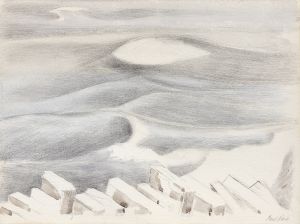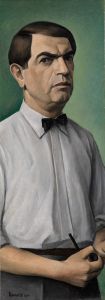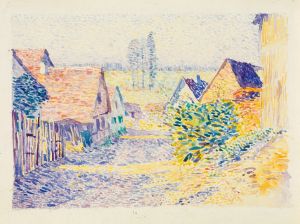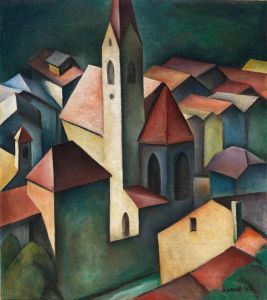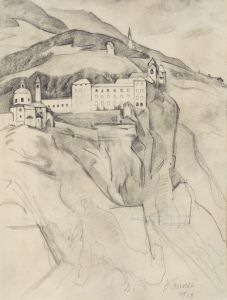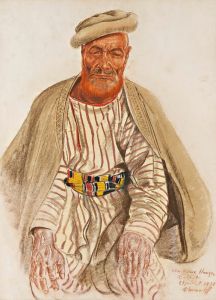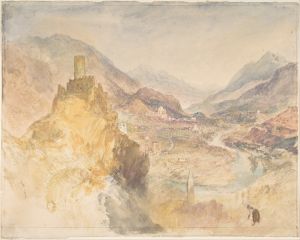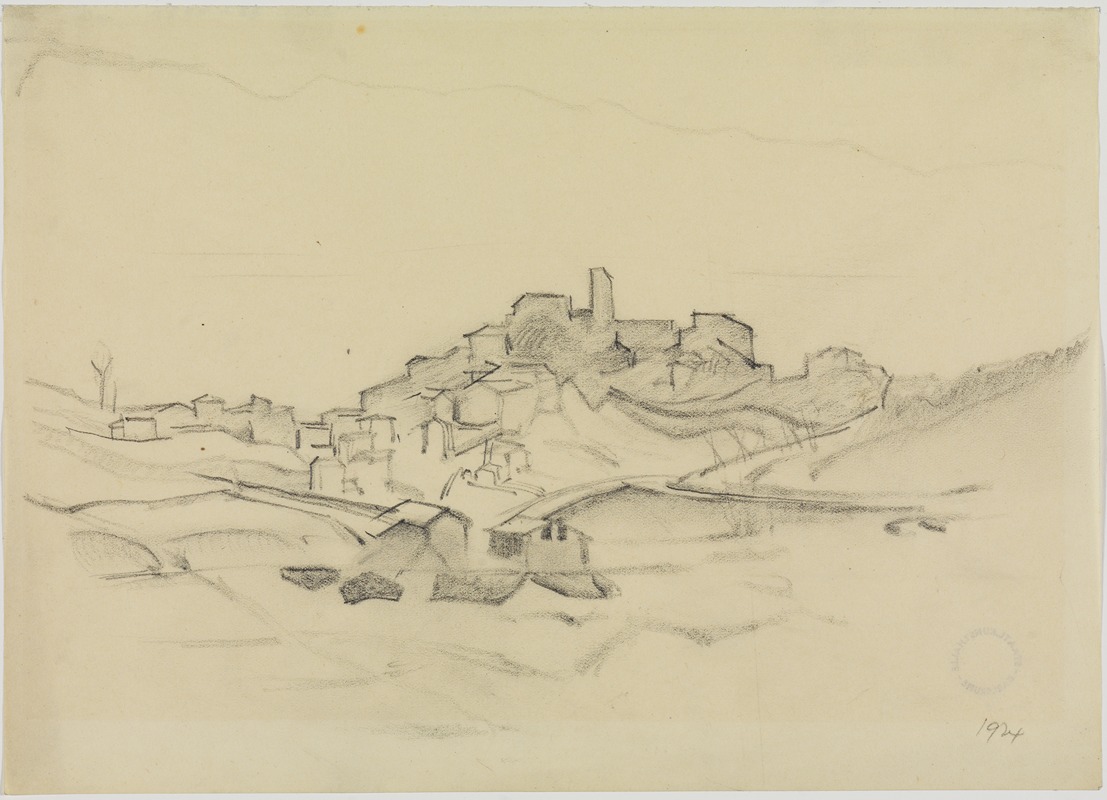
Ansicht von Olevano
A hand-painted replica of Alexander Kanoldt’s masterpiece Ansicht von Olevano, meticulously crafted by professional artists to capture the true essence of the original. Each piece is created with museum-quality canvas and rare mineral pigments, carefully painted by experienced artists with delicate brushstrokes and rich, layered colors to perfectly recreate the texture of the original artwork. Unlike machine-printed reproductions, this hand-painted version brings the painting to life, infused with the artist’s emotions and skill in every stroke. Whether for personal collection or home decoration, it instantly elevates the artistic atmosphere of any space.
"Ansicht von Olevano" (View of Olevano) is a painting by the German artist Alexander Kanoldt, created in 1923. Kanoldt was a prominent figure in the New Objectivity (Neue Sachlichkeit) movement, which emerged in Germany in the aftermath of World War I. This movement was characterized by a realistic style that often conveyed a sense of disillusionment and critical social commentary.
Alexander Kanoldt was born on September 29, 1881, in Karlsruhe, Germany. He initially studied at the Academy of Fine Arts in Karlsruhe and later became associated with the Berlin Secession, a group of artists who broke away from traditional academic art institutions to pursue more modern approaches. Kanoldt's early work was influenced by Impressionism and Post-Impressionism, but his style evolved significantly over time.
"Ansicht von Olevano" depicts the Italian town of Olevano Romano, located in the Lazio region, east of Rome. Olevano Romano has been a popular destination for artists since the 19th century due to its picturesque landscapes and historical architecture. The town's scenic beauty and tranquil atmosphere provided a rich source of inspiration for many painters, including Kanoldt.
In this painting, Kanoldt employs a meticulous and precise technique, characteristic of the New Objectivity style. The composition is marked by clear lines, defined forms, and a subdued color palette. The artist's attention to detail is evident in the rendering of the town's buildings, the surrounding landscape, and the play of light and shadow. The overall effect is one of clarity and order, reflecting the New Objectivity's emphasis on realism and objectivity.
Kanoldt's choice of subject matter in "Ansicht von Olevano" aligns with the New Objectivity's focus on everyday scenes and ordinary subjects. Unlike the more emotional and expressive styles of earlier movements such as Expressionism, the New Objectivity sought to depict the world in a straightforward and unembellished manner. This approach can be seen in Kanoldt's careful observation of the town's architecture and natural surroundings.
Throughout his career, Kanoldt remained committed to the principles of the New Objectivity, even as the movement evolved and changed. His work, including "Ansicht von Olevano," reflects a dedication to capturing the essence of his subjects with precision and clarity. Kanoldt's paintings often convey a sense of stillness and contemplation, inviting viewers to engage with the depicted scenes on a deeper level.
Alexander Kanoldt continued to paint and exhibit his work until his death on January 24, 1939, in Berlin, Germany. His contributions to the New Objectivity movement have been recognized as significant, and his paintings remain an important part of the history of 20th-century German art. "Ansicht von Olevano" stands as a testament to Kanoldt's skill and his ability to convey the quiet beauty of everyday life through his art.





